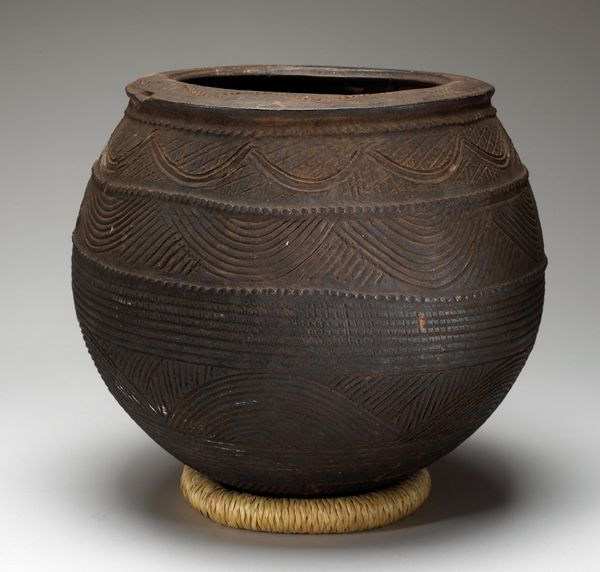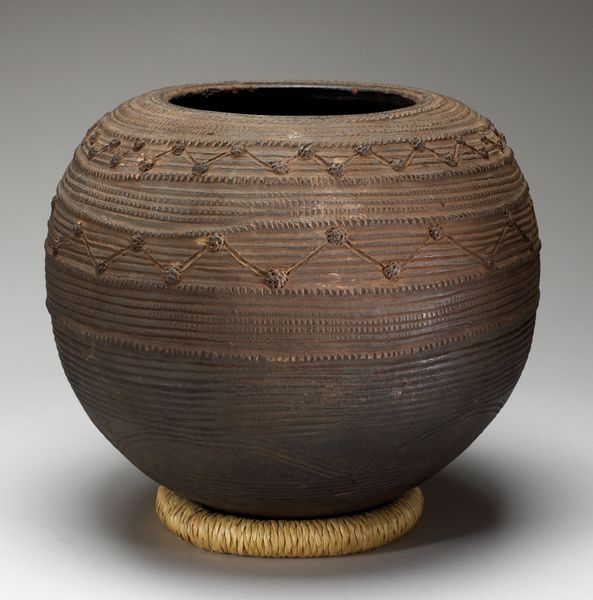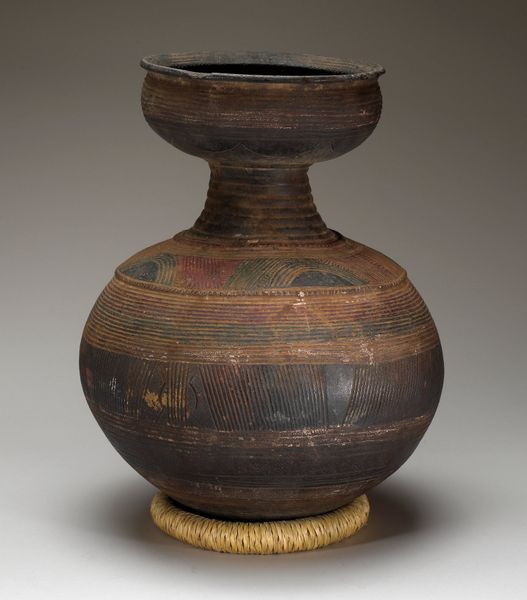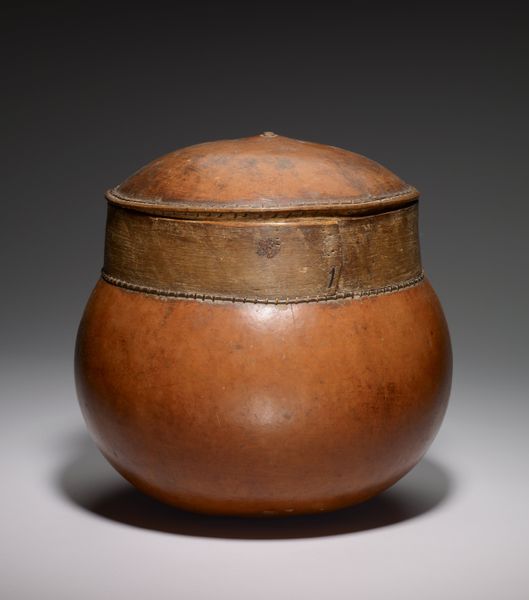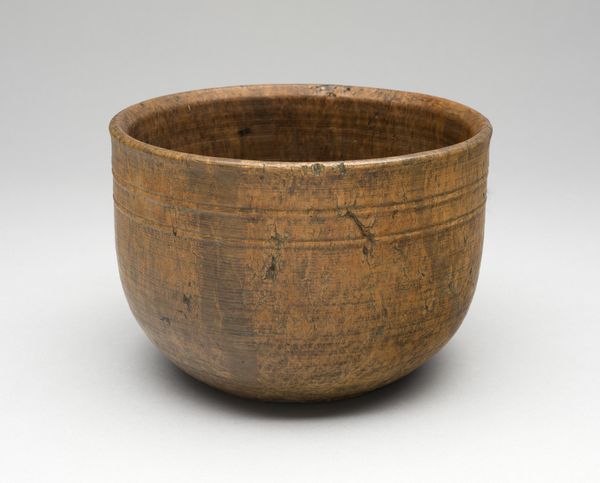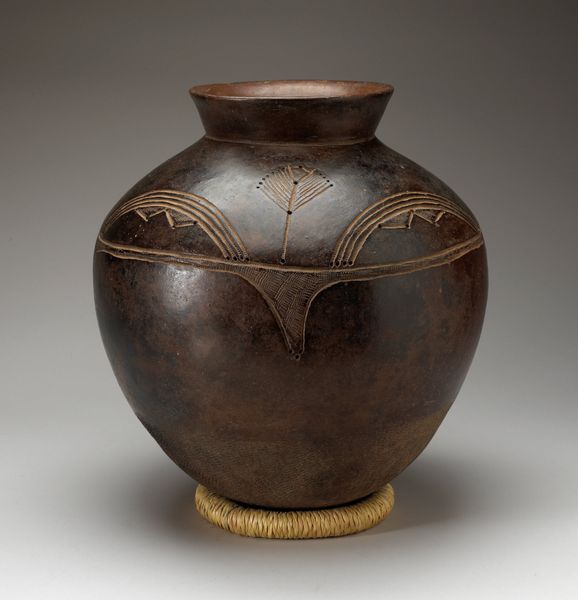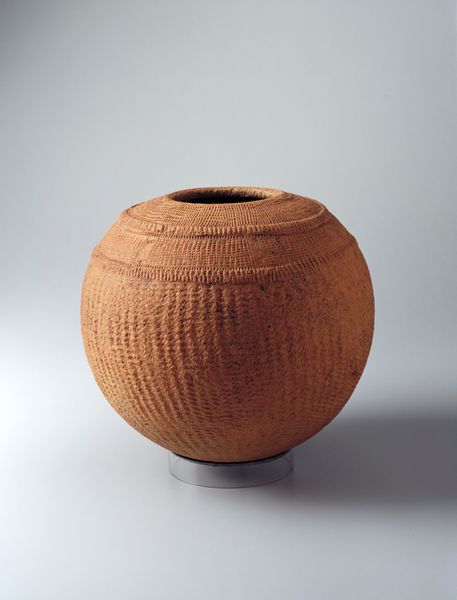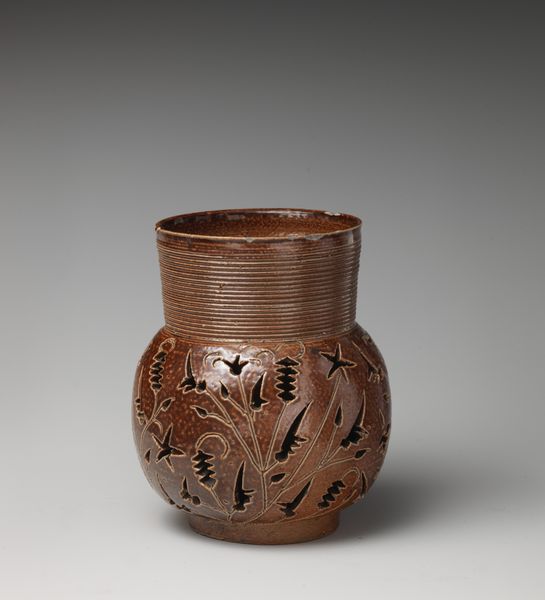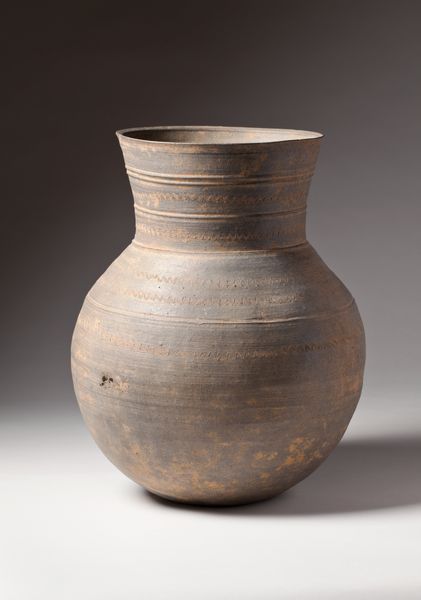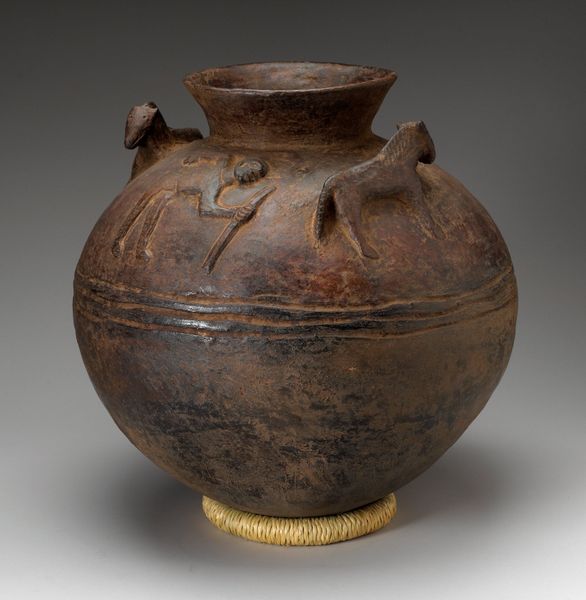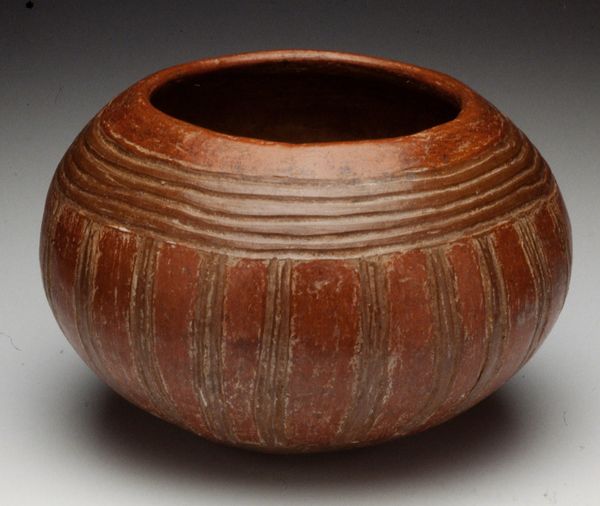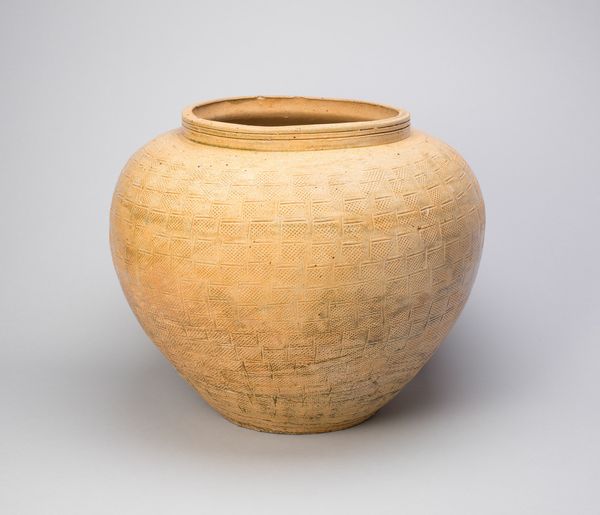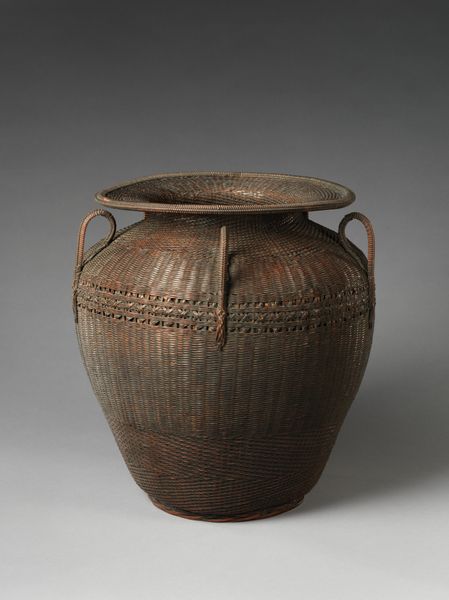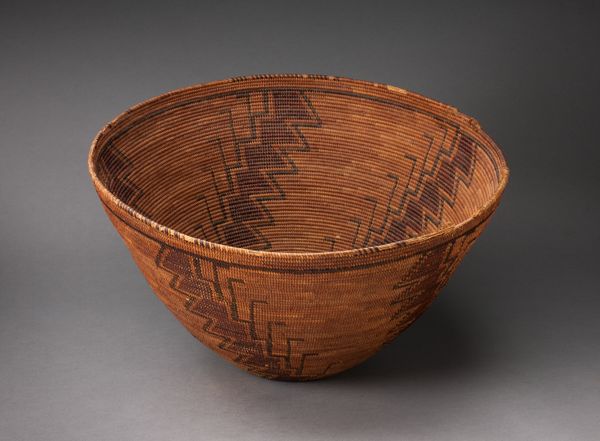
ceramic, earthenware, sculpture
#
african-art
#
ceramic
#
form
#
vessel
#
earthenware
#
stoneware
#
sculpture
#
ceramic
Dimensions: 12 x 14 3/4 x 14 3/4 in. (30.48 x 37.47 x 37.47 cm)
Copyright: Public Domain
Curator: Here we have a striking ceramic vessel by an unknown artist from the Nupe people, dating from around the 20th century. It’s part of the collection here at the Minneapolis Institute of Art. Editor: Immediately, the texture strikes me. That rough, earthen surface just begs to be touched, doesn't it? And the color—a deep, almost burnt umber. It feels very grounded. Curator: The form and surface design absolutely evoke the cyclical nature of life and time. The concentric circles at the top and the rhythmic patterns carved into the clay resonate with established Nupe artistic traditions reflecting social and spiritual meanings. The motifs include waves, ladders, and geometric shapes that function almost as a visual language connecting the vessel to cultural narratives. Editor: Interesting point. For me, the wave patterns carved near the top, and those precise vertical lines in the bottom third, seem almost in direct opposition to each other. I wonder if that visual tension speaks to some larger thematic binary inherent in its design. Curator: Possibly! Also consider that ceramic vessels like this were primarily functional, but this specific decoration elevates them to more symbolic status. The Nupe people were historically known for their expertise in various crafts, including pottery, and these crafted objects held economic and social currency. Think of these as imbued with symbolic, spiritual capital. Editor: So its cultural significance transcends pure functionality. Though the vessel’s physical design is certainly beautiful on its own, would you agree? I am drawn to the way that the curvature plays against those deliberately incised straight lines—how one emphasizes the other and creates this compelling whole. Curator: Precisely, a blend of utilitarian object and art form where even the smallest marks are imbued with purpose, contributing to the vessel’s presence as a visual mnemonic, capable of summoning and sustaining memory within a culture. Editor: Yes, that tension between utility and artistic expression is really captivating. It’s a testament to the ingenuity of its design, this dialogue between purpose and beauty. Curator: Absolutely. I am reminded of its significance as an ongoing form of knowledge and belief among the Nupe. Editor: And I'm just taken by the sheer physicality and how effectively that earthen materiality conveys a sense of enduring presence and the legacy of lived experience, literally shaping and giving definition to form and function in our world.
Comments
No comments
Be the first to comment and join the conversation on the ultimate creative platform.
